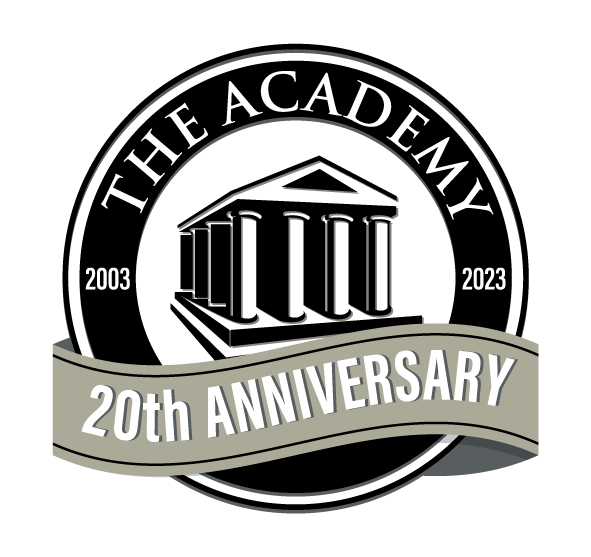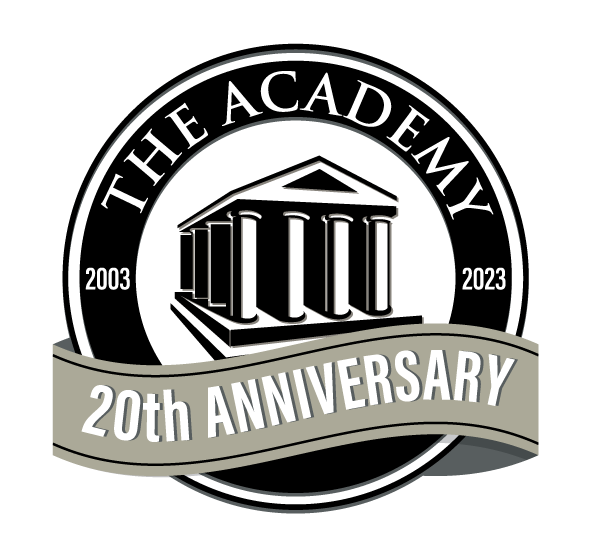About the Course
The CompTIA A+ certification (220-1201 & 220-1202) is the globally recognized standard for launching an IT career. A+ certified professionals are proven problem solvers who support today’s core technologies — from hardware and networking to cloud, security, and data management.
In this boot camp, you will learn to install, configure, troubleshoot, and maintain personal computers, mobile devices, operating systems, and cloud environments. Training combines instructor-led lessons with hands-on labs designed to prepare you for real-world IT support roles and the official CompTIA A+ certification exams.
Audience Profile
This course is intended for:
-
Individuals pursuing a career in IT support or help desk roles
-
Professionals preparing for the CompTIA Core 1 (220-1201) and Core 2 (220-1202) exams
-
Students or career changers seeking DoD 8140/8570-compliant certifications
-
Anyone looking to validate foundational IT skills in troubleshooting, security, and multi-OS environments
Learning Objectives
HARDWARE – Identify, connect, and configure hardware components and devices; support desktops, laptops, printers, and peripherals.
OPERATING SYSTEMS – Install, configure, and troubleshoot Windows 10/11, Linux, macOS, Chrome OS, iOS, and Android; work with command-line tools and imaging.
SOFTWARE TROUBLESHOOTING – Diagnose and resolve common OS, application, malware, and security-related issues across multiple platforms.
NETWORKING – Configure TCP/IP, Wi-Fi, SOHO networks, DNS, DHCP, and VPNs; understand protocols, ports, and wireless standards.
TROUBLESHOOTING – Apply structured troubleshooting to quickly resolve device, operating system, and network problems.
SECURITY – Implement best practices to secure devices, user accounts, and network connections; apply physical, logical, and mobile device security measures.
MOBILE DEVICES – Install and configure mobile devices and accessories; support applications and ensure connectivity for end users.
VIRTUALIZATION & CLOUD COMPUTING – Compare and contrast virtualization concepts; configure client-side virtualization and support cloud-based productivity tools.
OPERATIONAL PROCEDURES – Follow safety, environmental, and professional communication best practices; apply ITIL-style documentation and change management processes.
Certification Exam
This boot camp prepares you for both required exams:
-
CompTIA A+ Core 1 (220-1201): Focuses on mobile devices, networking, hardware, virtualization, and hardware/network troubleshooting.
-
CompTIA A+ Core 2 (220-1202): Covers operating systems, expanded security, software troubleshooting, and operational procedures.
Prerequisites
-
Basic computer user skills and familiarity with common computing concepts
-
Ability to complete tasks in a Microsoft Windows environment and browse/search online resources
-
(Recommended) CompTIA IT Fundamentals+ (FC0-U61) or equivalent experience
What’s included?
- Authorized Courseware
- Intensive Hands on Skills Development with an Experienced Subject Matter Expert
- Hands-on practice on real Servers and extended lab support 1.800.482.3172
- Examination Vouchers & Onsite Certification Testing- (excluding Adobe and PMP Boot Camps)
- Academy Code of Honor: Test Pass Guarantee
- Optional: Package for Hotel Accommodations, Lunch and Transportation
With several convenient training delivery methods offered, The Academy makes getting the training you need easy. Whether you prefer to learn in a classroom or an online live learning virtual environment, training videos hosted online, and private group classes hosted at your site. We offer expert instruction to individuals, government agencies, non-profits, and corporations. Our live classes, on-sites, and online training videos all feature certified instructors who teach a detailed curriculum and share their expertise and insights with trainees. No matter how you prefer to receive the training, you can count on The Academy for an engaging and effective learning experience.
Methods
- Instructor-Led (the best training format we offer)
- Live Online Classroom – Online Instructor-Led
- Self-Paced Video
Speak to an Admissions Representative for complete details
| Start | Finish | Public Price | Public Enroll | Private Price | Private Enroll |
|---|---|---|---|---|---|
| 12/8/2025 | 12/12/2025 | ||||
| 12/29/2025 | 1/2/2026 | ||||
| 1/19/2026 | 1/23/2026 | ||||
| 2/9/2026 | 2/13/2026 | ||||
| 3/2/2026 | 3/6/2026 | ||||
| 3/23/2026 | 3/27/2026 | ||||
| 4/13/2026 | 4/17/2026 | ||||
| 5/4/2026 | 5/8/2026 | ||||
| 5/25/2026 | 5/29/2026 | ||||
| 6/15/2026 | 6/19/2026 | ||||
| 7/6/2026 | 7/10/2026 | ||||
| 7/27/2026 | 7/31/2026 | ||||
| 8/17/2026 | 8/21/2026 | ||||
| 9/7/2026 | 9/11/2026 | ||||
| 9/28/2026 | 10/2/2026 | ||||
| 10/19/2026 | 10/23/2026 | ||||
| 11/9/2026 | 11/13/2026 | ||||
| 11/30/2026 | 12/4/2026 | ||||
| 12/21/2026 | 12/25/2026 | ||||
| 1/11/2027 | 1/15/2027 |
Curriculum
Core 1 (220-1201)
Domain 1.0 – Mobile Devices (13%)
-
Install and replace laptop components (batteries, RAM, storage, keyboards, wireless cards)
-
Configure displays, webcams, touchscreens, and other peripherals
-
Use special function keys, docking stations, and mobile accessories
-
Configure mobile device connectivity (Wi-Fi, Bluetooth, NFC, hotspots, tethering)
-
Support smartphones, tablets, wearables, GPS, and accessories
Domain 2.0 – Networking (23%)
-
Compare TCP/UDP ports and protocols (DNS, DHCP, HTTP/S, RDP, SMB, etc.)
-
Explain wireless standards (802.11 a/b/g/n/ac/ax, Bluetooth, RFID, NFC)
-
Summarize network services (DNS, DHCP, AAA, mail, web, syslog, IoT devices)
-
Configure basic wired and wireless SOHO networks (IPv4/IPv6, VLANs, VPNs)
-
Compare Internet connection types (DSL, cable, fiber, cellular, satellite)
-
Identify common networking hardware (routers, switches, firewalls, APs, patch panels)
-
Use networking tools (crimper, cable tester, toner probe, Wi-Fi analyzer)
Domain 3.0 – Hardware (25%)
-
Compare display types (LCD, OLED, Mini-LED) and resolutions
-
Identify cable types and connectors (RJ45, RJ11, HDMI, DisplayPort, USB-C, fiber, coax)
-
Compare RAM types, storage devices (HDD, SSD, NVMe, RAID), and removable media
-
Install motherboards, CPUs, and add-on cards (NICs, GPUs, sound cards)
-
Select power supplies based on wattage, connectors, and efficiency ratings
-
Install and configure printers (laser, inkjet, thermal, impact, 3D) and perform maintenance
Domain 4.0 – Virtualization & Cloud Computing (11%)
-
Explain desktop virtualization and hypervisors (Type 1 vs. Type 2)
-
Understand cloud models (IaaS, SaaS, PaaS, public, private, hybrid)
-
Identify cloud features (elasticity, multitenancy, metered use, file sync)
Domain 5.0 – Hardware & Network Troubleshooting (28%)
-
Diagnose issues with motherboards, RAM, CPUs, and power supplies
-
Troubleshoot storage and RAID failures (SMART errors, missing arrays)
-
Resolve video, display, and projector problems (dead pixels, dim image, cabling issues)
-
Fix common mobile device issues (battery swelling, overheating, liquid damage, malware)
-
Troubleshoot wired/wireless networks (slow speeds, VoIP quality, authentication issues)
-
Solve printer issues (paper jams, faded prints, driver errors, print queue problems)
Core 2 (220-1202)
Domain 1.0 – Operating Systems (28%)
-
Identify OS types: Windows, Linux, macOS, ChromeOS, iOS, Android
-
Install and upgrade operating systems (clean install, image deployment, remote install)
-
Compare Windows 10/11 editions and features (Pro, Enterprise, BitLocker, RDP)
-
Use Windows tools (MMC, Event Viewer, Device Manager, Task Manager, PowerShell)
-
Configure Windows settings (firewall, system, devices, user accounts, indexing, power)
-
Set up networking features (workgroup vs. domain, VPNs, proxies, firewall rules)
-
Use macOS and Linux tools (Terminal, Disk Utility, nano, chmod, apt/dnf, systemd)
-
Install and configure applications and cloud-based productivity tools
Domain 2.0 – Security (28%)
-
Apply physical, logical, and mobile device security (MFA, biometrics, MDM, PAM)
-
Configure Windows security (Defender, NTFS/share permissions, UAC, BitLocker)
-
Compare wireless security protocols (WPA2, WPA3, AES, TKIP)
-
Identify malware types (virus, ransomware, rootkit, keylogger, spyware) and removal tools
-
Recognize social engineering and cyberattacks (phishing, DDoS, spoofing, SQL injection)
-
Perform SOHO malware removal and apply workstation hardening
-
Secure mobile devices with encryption, screen locks, patching, remote wipes
-
Apply data destruction/disposal best practices (shredding, wiping, degaussing)
-
Configure browser and SOHO router security settings
Domain 3.0 – Software Troubleshooting (23%)
-
Troubleshoot Windows OS issues (BSOD, boot failures, performance problems)
-
Fix mobile OS/application issues (crashes, failed installs, connectivity, updates)
-
Resolve mobile OS security issues (malware, data leaks, fake apps)
-
Troubleshoot PC security issues (false antivirus alerts, redirections, missing files)
Domain 4.0 – Operational Procedures (21%)
-
Use documentation and support systems (ticketing, asset management, knowledge base)
-
Apply change management procedures (rollback, risk analysis, approvals)
-
Implement backup/recovery strategies (full, incremental, differential, 3-2-1 rule)
-
Follow safety/environmental procedures (ESD, power safety, recycling, MSDS)
-
Enforce privacy/licensing policies and prohibited activity rules (PII, HIPAA, AUP, DRM)
-
Apply professional communication skills and cultural awareness in IT support
-
Use scripting basics (.bat, .ps1, .py, .sh, .js) for automation and troubleshooting
-
Implement remote access technologies (RDP, VPN, SSH, VNC, third-party tools)
-
Understand AI basics (integration, data privacy, accuracy, limitations)

